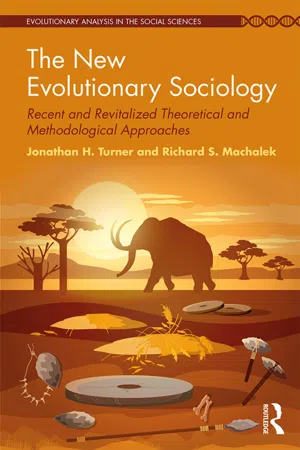Social Sciences
Types of Societies
Types of societies can be categorized based on their level of technological advancement and social complexity. Hunter-gatherer societies rely on foraging and hunting, while agrarian societies are centered around farming. Industrial societies are characterized by technological advancements and urbanization, while post-industrial societies are driven by information and service industries. These classifications help understand the organization and dynamics of human societies.
Written by Perlego with AI-assistance
Related key terms
2 Key excerpts on "Types of Societies"
- eBook - ePub
- Prof Kenneth Thompson(Author)
- 2003(Publication Date)
- Routledge(Publisher)
He denied that he held to this kind of “realism”. He claimed that, far from “eliminating the mental element from sociology” he had “expressly stated and reiterated that social life is constituted wholly of collective ‘representations’” [1], p. xli. This has since led some critics to label him as an “idealist”—one who sees society as an interdependent set of beliefs and ideas. And it is certainly the case that his later work gave prominence to the cultural phenomena, such as linguistic symbols, religious beliefs, and moral norms. But despite the varying emphases that he gave to the two sets of factors in his different works, there is no doubt that he was searching for a way of disclosing the principles of correspondence by which certain patterns of social interaction and patterns of beliefs and ideas could be shown to have an affinity for each other. The discovery of these principles would require the classification of social types in terms of the mode of combination of their component elements. In the Rules the discussion of the method of classification is mainly taken up with examples of types of social organization, from the most simple unit, the “horde”, throught the segmental type called a “clan”, to more complex combinations. In his later work he was to devote more attention to classifications of a cultural sort and their correspondence with the types of social organization, mainly in simple societies, as in the case of totemic beliefs in societies with clan-based organization. 3.5.2 Classification of social types The purpose in drawing up classifications of social types was to make it possible to test hypotheses about the relationships between social phenomena. The classification of types of social organization (or species) would facilitate this scientific endeavour because it would make it unnecessary to examine every separate case before making a generalization - eBook - ePub
The New Evolutionary Sociology
Recent and Revitalized Theoretical and Methodological Approaches
- Jonathan H. Turner, Richard S. Machalek(Authors)
- 2018(Publication Date)
- Routledge(Publisher)
capital), divided by population size (recognizing that other forces can intervene in this basic relationship). The relations among these variables explain, to a high degree, the movement of societies during societal evolution from hunting and gathering through horticulture and agriculture (including fishing and pastoral variants) through industrial and post-industrial phases.(iii) The Nature of Human Nature. Lenski emphasizes that “what social theory should and cannot tolerate is the current widespread practice of leaving assumptions about human nature largely unstated and unexamined
Learn about this page
Index pages curate the most relevant extracts from our library of academic textbooks. They’ve been created using an in-house natural language model (NLM), each adding context and meaning to key research topics.

